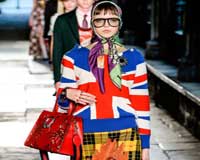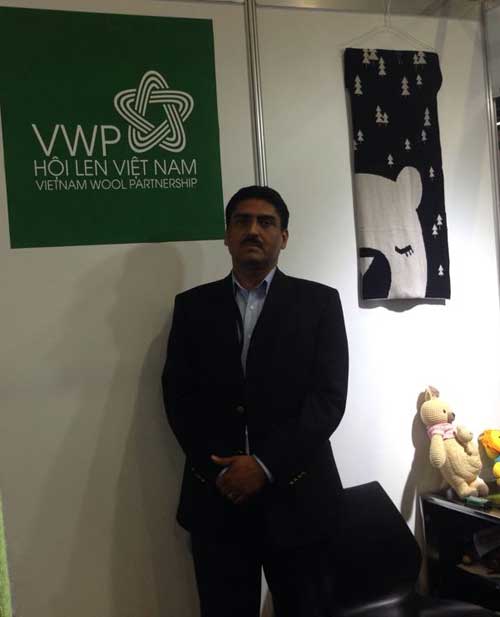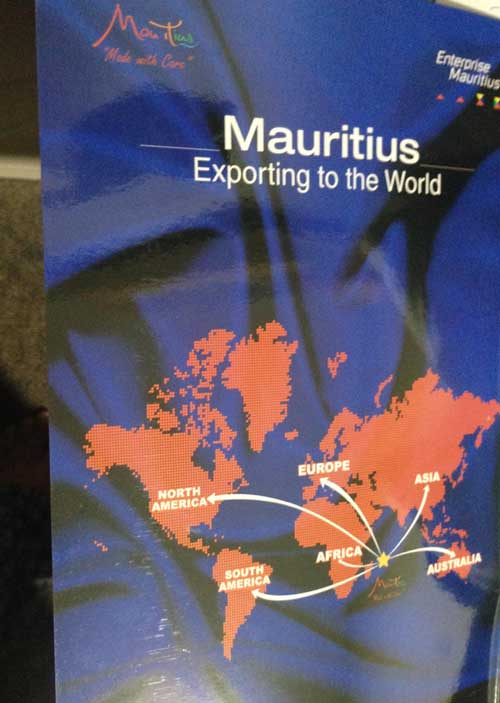FW
Grasim, a part of Aditya Birla Group, has posted consolidated net revenue of Rs 13,646 crore for the quarter ended September 30, 2017. This is an increase of 63 per cent over Rs 8,386 crore in second quarter of previous fiscal, which did not include the erstwhile Aditya Birla Nuvo Limited (ABNL).
During the quarter, VSF prices remained firm globally driven by tighter supply ex-China on account of output curtailment due to environmental factors. The domestic VSF market saw restocking of the inventory leading to increase in sales volume by 5 per cent year-on-year. The viscose business EBITDA for the quarter was at Rs 468 crore on the back of higher realisation and improved operational efficiencies. Results for the quarter also include revenue of Rs 200 crore and EBITDA of Rs 61 crore of VFY business, now part of Grasim post ABNL merger.
Grasim has recently stated its VSF business will continue to focus on expanding the market in India by partnering textile value chain, achieving better customer connect through Brand Liva and enriching the product mix through a larger share of specialty fibre.
Domestic caustic soda prices witnessed an uptrend driven by healthy demand and supply constraints in the global market arising from environmental considerations in China and weather-related disruption in the US. Production from Veraval plant (erstwhile ABNL) contributed to 7 per cent year-on-year growth in caustic soda sales volume during the quarter.
Indigo Mill Designs (IMD) has developed a disruptive, foam dyeing process for producing denim. Foam dyeing of yarn is a new technology that is environmentally friendly and cost effective. However, it couldn’t be put to much use in denim manufacturing because the indigo dye used to create the blue color reacts to oxygen in the air.
IMD’s Indigo Zero solution overcomes this limitation, resulting in net reduction of water and energy use of more than 90 per cent. In addition, the foam dyeing process reduces chemical use while achieving the same or better dye quality compared to conventional processes.
A large fabric mill uses millions of gallons of water every day to dye denim. IMD’s innovation can greatly reduce that amount and cut the energy needed for dyeing and wastewater treatment.
IMD’s foam dyeing process will allow fabric mills to produce much smaller quantities than conventional dyeing processes, when desired. In addition to reducing waste, smaller fabric runs will allow for exciting design and marketing innovations in the denim industry. Wrangler is among the investors in this process. Wrangler has advanced the commercialization of this technology since it has the potential to dramatically improve the environmental impact of the industry and help the brand reach its goals for water conservation.
"While the entire industry awaits the final Brexit agenda to decide their future course of action, recent developments show the UK government is pushing for a two-year transitional deal to help a smooth change. Prime minister Theresa May outlined plans to strike a deal that would effectively delay implementation of any new trade agreement between the UK and the EU until 2021. At the end of October, Brexit secretary David Davis told a committee of MPs that he expected the outline of this transitional period to be agreed within the first three months of 2018."

While the entire industry awaits the final Brexit agenda to decide their future course of action, recent developments show the UK government is pushing for a two-year transitional deal to help a smooth change. Prime minister Theresa May outlined plans to strike a deal that would effectively delay implementation of any new trade agreement between the UK and the EU until 2021. At the end of October, Brexit secretary David Davis told a committee of MPs that he expected the outline of this transitional period to be agreed within the first three months of 2018. This move welcome across fashion and retail fraternity as everyone in unison feels an early agreement on transitional arrangements would be essential to allow companies time to prepare. Helen Dickinson, Chief Executive, British Retail Consortium (BRC), points out he would allow time to adapt new customs controls to avoid disruption and to agree a final deal that avoids new tariffs. According to her, a period of implementation is vital to offer certainty for businesses and allow them to prepare.
Brexit’s impact

Nigel Lugg, Chairman, UK Fashion and Textile Association (UKFT), during a recent Association of Suppliers to the British Clothing Industry’s autumn conference in Peterborough, said the government negotiation is key to the future of the industry. There are huge benefits the industry could reap post-Brexit but the complexities of the divorce settlement run deeper than anyone can even imagine. Julia Redman, Head of buying for kidswear, menswear and home at value fashion retailer M&Co, feels no one knows the exact outcome of the treaty. It’s like stepping into the unknown. The only thing that can be achieved is to plan well for the future.
The BRC is calling for a system that ensures goods can continue to be imported without delays, disruption or additional costs. This would require significant investment in capacity, staff and IT systems – all of which would take time to sort out.
Mike Flanagan, CEO, Clothesource, explains 92 per cent of clothing exports and 31 per cent of imports have to travel through European customs posts. At borders outside the EU, lorries turn up and wait for a couple of days. Lugg said one of their key demands is to remain in the European Customs Union. The speed and simplicity of sending goods to Europe has been a huge benefit. On the French side of the Channel Tunnel, there is space for just six (articulated) lorries at the border. The industry can’t afford to let customs delays happen.
Draft FTA before end of time
In early October, trade secretary Liam Fox said the government expected to have draft FTAs on the table long before it reached the end of Brexit transitional period. This is good news for the fashion and textiles industry. There is a need to conclude meaningful trade deals with the US, Japan, Australia, New Zealand, and so on, as the opportunities are unbelievable. FTAs could provide a huge boost to the sector’s export drive, and the growth of UK manufacturing.
The US is the UK’s largest export market outside the EU but duties and tariffs, the ATA Carnet – an international customs document that permits the temporary tax-free and duty-free export and import of goods for up to one year – and other non-tariff barriers make many UK companies reluctant exporters to the US. An FTA would simplify the process, allowing brands to enter the US easily. The US has shown substantial interest in UK-made products. The buzz is EU is likely to offer an interim arrangement but limit it to 21 months. Whether it extends to 21 or 24 months, securing such a deal must be a priority for the prime minister.
Opportunities & challenges
A two-year transitional Brexit arrangement would give fashion businesses more time to adapt to new customs controls. Allow EU nationals in the UK more time to settle their migration status. Give more time to establish new administrative systems for customs. Potentially give the government time to negotiate draft FTAs. Give ministers time to agree on a final deal that avoids new tariffs. However, it could also keep the value of sterling low for longer, ultimately leading to retail price rises.
Adidas wants to compete with Nike in the US market. Right now North America accounts for around 20 per cent of Adidas’ sales. While Adidas has a neck-and- neck race with Nike everywhere else, Nike still has a lead in the US.
Adidas considers this its biggest weakness since North America's share of the global sports market is 37 per cent. So the brand feels there is a lot to catch up on. It wants to be significantly larger and more profitable in North America.
Adidas has set a margin target of around eleven per cent by 2020. Currently, it stands at 7.5 per cent to 7.7 per cent. The brand considers the US to be the most profitable market in the world since the market there is much less complex than it is in Europe. Just four or five major retail chains cover the entire US. Reebok is a part of Adidas.
In Q3 Adidas’ sales grew 13 per cent at constant exchange rates, Reebok grew by a modest 0.6 per cent. While the brand is growing in the rest of the world, Reebok’s home market, the US, is experiencing a decline in sales. The double digit growth in Adidas meant it won’t go in for cost cutting measures or staff cuts.
Woolmark has launched an initiative to establish manufacturing chains for wool in Vietnam.
Training is imparted to Vietnam’s knitters who produce wool products like sweaters, coats, suits etc in both flat and circular knitting. A few weaving units produce wool and wool blended fabrics for corporate uniforms and these companies will gradually start focusing on high fashion.

ISEA is a great platform for Vietnamese players to explore the Australian market. Vietnam Wool Partnership is one of the booths at ISEA.
Wool constitutes less than 1.2 per cent of the global consumption of fibers, yet it remains one of the most sought after fibers at the premium end. Wool leads to skin comfort. The crimp in the fiber makes wool good for all seasons. Additionally wool retains odor better than any other available fiber. Another interesting feature it imparts is crease resistance.
Hence the sum total of all this is that wool is unique and distinctively useful for sportswear, active and sleepwear garments. Wool is the preferred fiber for all these categories.
Mauritius is a country which can boast of having one of the best infrastructures in Africa. It has a population of 1.2 million with the main languages being English, French and Creole.

The textile and clothing industry of Mauritius is into knitwear, kids’ wear, trousers etc. But knitwear is where it excels in and enjoys international prowess. Mauritius has quite a few vertically integrated units. The country is developing the capability and capacity to cater to the needs of global buyers especially US buyers.

Over the years its cost of manufacturing is going up and part of the supply chain is shifting to Madagascar for exploiting the cost arbitrage as it continues to have some tariff advantage through trade pacts like AGOA. The USP of Mauritius is the reliability and credibility it has built in its buyers’ community which is the holy grail of its continued relevance to the ever changing sourcing landscape.
Enterprise Mauritius, the promotion agency for Mauritius’ textile and clothing industry, is one of the exhibitors at ISEA November 2017.
Levi’s is developing out-of- the-box business strategies. The retailer has developed new innovative initiatives, including wearable technology products and designer collaborations, to keep consumers part of its story.
A rich denim history comes along with Levi’s market presence. Collaborations have been key to keeping Levi’s heritage alive. Last month, the brand celebrated the 50th anniversary of its iconic 1967 70505 Type III trucker jacket by partnering with 50 influencers from around the world to create their own versions of the jacket, and consumers can choose the trucker jacket that fits with their personal style aesthetics.
Levi’s recent dabble in wearable technology is an example of the brand’s stay- ahead-of- the-curve commitment. In September, Levi’s and Google launched a new Levi’s commuter trucker jacket—a smart denim jacket woven with conductive yearns that connect to mobile phones—for its tech-influenced consumer base. This partnership enabled Levi’s to not only be viewed as a denim authority, but a denim authority with a mission to drive innovation in coming years.
Consumers are driving just about everything at retail today, and some companies are building a robust digital presence and developing innovative concepts to keep them engaged. They are locking in consumer loyalty amid store closures and retail’s uncertainty.
Ghana’s textile industry is in dire straits. The industry’s woes started in early 2000 when original designs made by Ghanaian textile companies were stolen and reproduced cheaply in China for the Ghana market. The industry which had so much potential was pushed to its knees as the high cost of production and the influx of cheaper and pirated textiles from China left it helpless. The textile industry which used to employ over 25,000 people has seen a decline in production since 2005, leading to massive lay-offs. The workforce in the industry has dropped by over 80 per cent since 1985.
Production of fabrics was 130 million meters in 1975, 46 million meters in 1995, 65 million meters in 2000 and 39 million meters in 2003. Today, production is below the 30 million meter mark. Workers are calling for the re-activation of textiles piracy task force set up in 2010 to deal with traders in counterfeit textiles.
While locally produced cotton is used by firms, many of the dyes, chemicals and machines are imported from abroad at significant prices. The market is flooded with counterfeit textiles. The borders are porous with only a few of them manned by security people, making it very easy for these counterfeiters to pass through.
The three-day India International Garment Fair will be held in New Delhi, January 17 to 19, 2018. The fair will showcase the entire range of women's wear, men's wear, children's wear and fashion accessories. Around 350 garment and accessories manufacturers will display their collections.
IIGF is one of the largest and most popular platforms in Asia where overseas garment buyers can source and forge business relationships with India's finest in the apparel and fashion accessories domains. It is the flagship event of the Apparel and Export Promotion Council (AEPC) and has been building bridges between global buyers and suppliers from India for the last three decades.
For this edition, AEPC has partnered virtual fashion trade show platform Fashionablyin to create a virtual buyers’ lounge. Fashionablyin aims to make buyer trips more efficient by engaging them with the right suppliers. The company will match buyers with suppliers by planning meetings in advance and facilitating discussions with suppliers.
The Fashionablyin Virtual Buyers Lounge will be a great place for buyers and suppliers to connect and build relationships in a friendly and casual environment. With the dynamics of the global garment and apparel industry changing considerably in the last couple of years, the industry is shifting to India, the world’s most diversified clothing exporter.
Make it British was held on November 2 and attracted over 200 designers, manufacturers, retailers and academics, who gathered together to join a debate on how to build a British brand.
The UK textile industry, which has been in persistent decline since the late 1970s, has finally seen a rebirth. Several textile mills have opened, including the first cotton spinning plant in the UK for decades. Several factors have contributed to this turnaround. The cost of producing overseas has risen, particularly since the Brexit referendum, and the way the exchange rate is going has helped new UK producers and brands. Suddenly it has become more affordable to manufacture goods in Britain.
There has been a 25 per cent rise in the export of British-made clothing since 2011 largely due to emerging markets such as China and the US wanting to buy more products made in the UK. Issues like sustainability and transparency were acknowledged as some of the key aspects of having a manufacturing plant based in the UK. For manufacturers having a factory in the UK means they are flexible and very agile. Also, it means they are less exposed to currency fluctuations.
The shared opinion was, however, that it is important not to forget about functionality and relevance of the product, which should come before the emphasis on Brand British.












